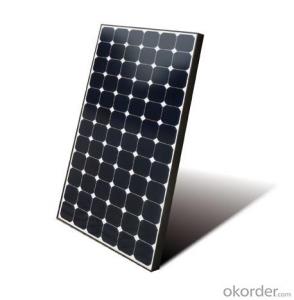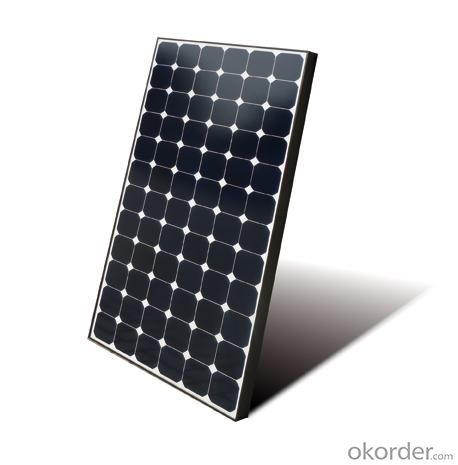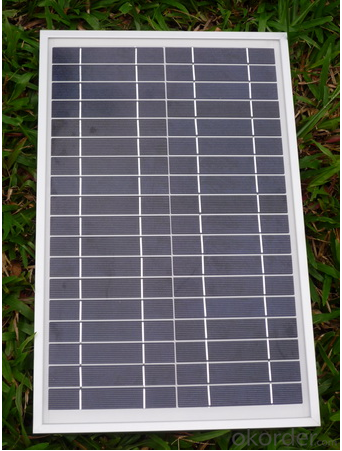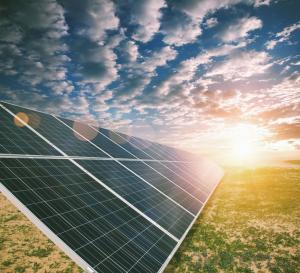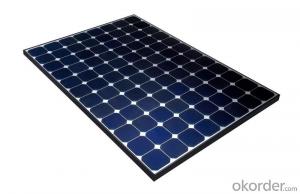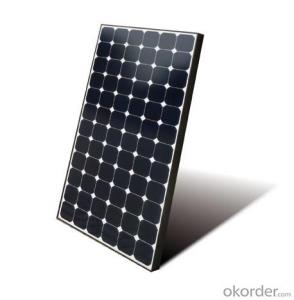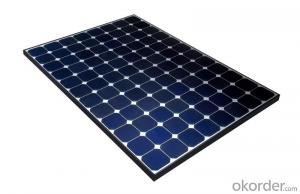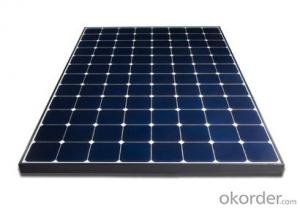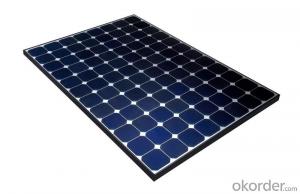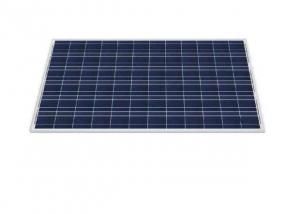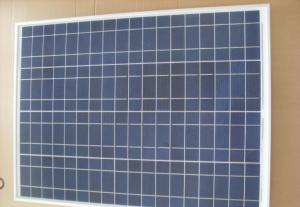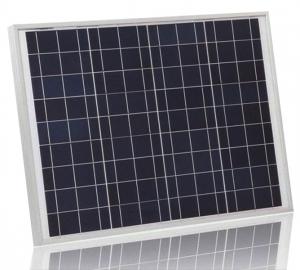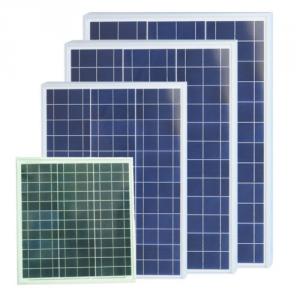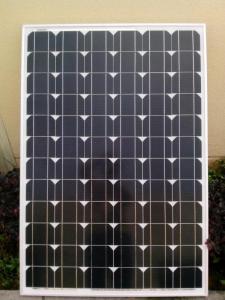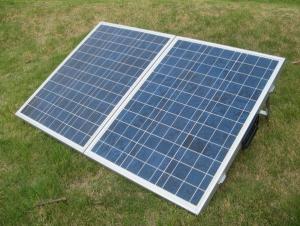Truck Solar Panels - CNBM Poly 190W Solar Panel with TUV UL CE Certificate for Residential
- Loading Port:
- Shanghai
- Payment Terms:
- TT OR LC
- Min Order Qty:
- 100 watt
- Supply Capability:
- 1000 watt/month
OKorder Service Pledge
OKorder Financial Service
You Might Also Like
Specification
CNBM Poly 190W Solar Panel with TUV UL CE Certificate For Residential
Introduction
Electrical connections are made in series to achieve a desired output voltage and/or in parallel to provide a desired current capability. The conducting wires that take the current off the modules may contain silver, copper or other non-magnetic conductive [transition metals]. The cells must be connected electrically to one another and to the rest of the system. Externally, popular terrestrial usage photovoltaic modules use MC3 (older) or MC4 connectors to facilitate easy weatherproof connections to the rest of the system.
Each module is rated by its DC output power under standard test conditions, and typically ranges from 100 to 365 watts. The efficiency of a module determines the area of a module given the same rated output – an 8% efficient 230 watt module will have twice the area of a 16% efficient 230 watt module. There are a few solar panels available that are exceeding 19% efficiency. A single solar module can produce only a limited amount of power; most installations contain multiple modules. A photovoltaic system typically includes a panel or an array of solar modules, a solar inverter, and sometimes a battery and/or solar tracker and interconnection wiring.
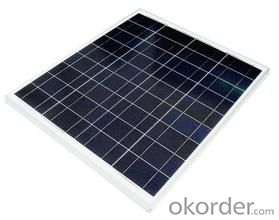
Suggested application
Home lighting business lighting,
Garden lighting, pavement lighting
Farmer household lighting
Decorative water pump
Traffic signal lighting
Industry area
Business area
Solar Power Plant
Product feature
Modules are made of Monocrystalline or Polycrystalline Silicon cell.
Materials and color of the solar panel frame: Clear anodized aluminum alloy type 6063T5 Universal frame; Silver-white color;
The output connection gathers the coupling: Selects conforms to the IEC-612615; 2005, class II, IEC61730 international standard; Airtight waterproofing binding clamp;
Module seal structure: The surface is thick, the high diaphanous rate armored glass with solar cell board special-purpose 3.2mm becomes after the high temperature lamination craft. The back selects has waterproof and anti- aged performance fine TPT materials. The entire block battery board has, the waterproofing, the anti- aging airtight and so on the fine performance;
Power tolerance: +/-3%
Packaging
International standard cartons (according to the requirements of customers)
- Q: How do solar panels impact the aesthetics of a building?
- Solar panels can have both positive and negative impacts on the aesthetics of a building. On one hand, solar panels can enhance the visual appeal by adding a modern and sustainable look to the structure. They can be integrated seamlessly into the design, giving the building a contemporary and eco-friendly appearance. On the other hand, some people may find solar panels visually unappealing or out of place, especially if they are not well-integrated or if they differ significantly from the building's architectural style. Ultimately, the impact on aesthetics will depend on the design and placement of the panels, as well as individual preferences.
- Q: was looking at a few different sites, here is one of them
- Building your own panels can be an interesting experiment, but if you are looking for solar panels to provide significant, consistent output, you should buy factory made ones. I get lots of calls from people who built their own panels and get a fraction of the advertised output from them. Plus, factory built panels will last 40 - 50 years, with a 25 year warranty, how sure are you that you can build something that can withstand the outdoors for that long? The price of panels has dropped a lot this year, plus with rebates and tax credits, it's getting more affordable.
- Q: Can solar panels be installed on residential complexes or apartment buildings?
- Yes, solar panels can be installed on residential complexes or apartment buildings. Many residential complexes and apartment buildings have successfully installed solar panels to generate clean and renewable energy for their residents. This not only helps in reducing electricity bills but also contributes to a greener and more sustainable environment.
- Q: Ok so if i wanted to put a solar panel on my house and i live where it snows, will that be a problem? If the snow covers the solar panel will that be a problem? If so then do i have to climb on my roof and clear it off or what?
- It shouldnt be a problem being where it snows, as long as you dont mind clearing it off a lot to recieve maximum efficiency! Or else it should work anyways but not as well covered with snow.
- Q: Are there any fire hazards associated with solar panels?
- Yes, there are potential fire hazards associated with solar panels. Although solar panels themselves do not typically catch fire, electrical malfunctions or faults in the wiring, inverters, or connectors can lead to overheating and fire. Additionally, if a fire breaks out in the surrounding area, solar panels can hinder firefighting efforts by creating potential electrical hazards and obstructing access to the roof. Therefore, proper installation, regular maintenance, and compliance with fire safety regulations are crucial in mitigating these risks and ensuring the safe operation of solar panel systems.
- Q: how to make electricty using solar panels or wind generator
- Hey Bandit, there are some really good websites on the subject, my favorites are operated by non profit groups, I will list them below. As the old saying goes, the best things in life are free, but there is one really good exception to that rule. Home Power Magazine is the only periodical that gets into the nuts and bolts of home grown energy. We started reading it 2 years ago. A couple years after that we attended an energy fair that was listed in the magazine, ended up buying our first solar panel and wind turbine on the spot, and hooking up a small 2 volt power system for our home that year. It worked really well, we did make some mistakes, but with the knowledge and experience we gained, we were able to get into a larger system a few years later. Now our home generates almost all its own power, and we use the utility company for backup. There is a .4 kw solar array on the garage roof, and a kw turbine on a metal tower in the field behind the house. We have also installed a batch solar water preheater and have 2 wood stoves for heat. Now our electric bills are around $6 per month. If your handy at all hooking up electrical devices, you could put together a small system like we did years ago and use it to run some small 2 volt lights and electronics. We still have our little system today, it operates the cabinet lighting in the kitchen, a few radios and phone answering machine, and we have 2 volt outlets in each room. They're handy for stuff like charging your cell phone with a car cord. I would suggest looking at the websites first, and if you're really interested, go for a one year subscription to Home Power. If you subscribe, you can even use their website to look at archived articles from years past. There is even one on our small system, the magazine liked the idea so much they wrote it up. Use their search engine to look for, Small System First. Hope you find all this interesting. Take care Bandit, Rudydoo
- Q: Can solar panels be installed on remote monitoring systems?
- Yes, solar panels can be installed on remote monitoring systems. Solar panels provide a reliable and sustainable source of power for remote monitoring systems, allowing them to operate efficiently even in areas without access to grid electricity.
- Q: Is it good? ( solar energy)
- Solar panel is one of the best sources nowadays to generate electric energy using the sun rays that comes from the sun. But, this set can be so hard to find and it’s very expensive to buy.
- Q: How do solar panels perform in cloudy weather?
- Solar panels can still generate electricity in cloudy weather, although their performance is reduced compared to sunny days. Cloud cover reduces the amount of sunlight reaching the panels, resulting in a decrease in energy production. However, solar panels can still produce a significant amount of energy even under cloudy conditions, making them a viable source of renewable energy in regions with less sunlight.
- Q: Can solar panels be used in areas with high levels of seismic activity?
- Yes, solar panels can be used in areas with high levels of seismic activity. However, special design considerations and installation techniques may be required to ensure their stability and withstand potential earthquake forces.
Send your message to us
Truck Solar Panels - CNBM Poly 190W Solar Panel with TUV UL CE Certificate for Residential
- Loading Port:
- Shanghai
- Payment Terms:
- TT OR LC
- Min Order Qty:
- 100 watt
- Supply Capability:
- 1000 watt/month
OKorder Service Pledge
OKorder Financial Service
Similar products
Hot products
Hot Searches
Related keywords
